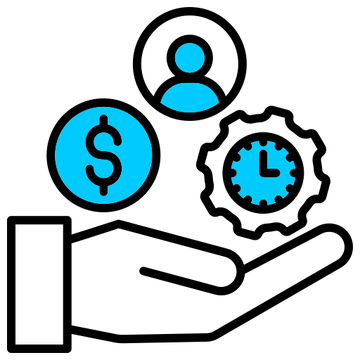

Removable Film Labels
Written by: Beichen Lu
|
|
Time to read 3 min
Having a well-crafted product label can significantly affect your product's success. Since consumers tend to make quick judgments based on appearances alone, with packaging accounting for one-third of purchase decisions, it can be challenging for your product to stand out.
However, you don't necessarily need a graphic designer to create top-notch product labels. Instead, follow the steps below to create labels and packaging that will capture customers' attention and encourage them to buy.
Table of Content
Knowing your intended audience can simplify the process of designing labels. Reflect on their purchasing behavior by considering the following:
How do you determine the appropriate amount of packaging for your product? Before making a decision, ask yourself:
If your product is meant for use in the shower or bathroom, for example, it is essential to use a waterproof label.
Do Something Distinctive
Your label material is an opportunity to enhance your packaging or choose a more attention-grabbing option. Textured brown kraft labels, metallic foil labels, or holographic labels can add depth to your product and attract more potential customers. If you do not want a fully metallic label, consider using cold-foil stamping to add metallic elements to specific areas of your label.
Match the Container
If you are using a clear glass or plastic container or have an unusual package, make the most of it. Clear labels can give your packaging a "no label" appearance and highlight its uniqueness.
If you are using a colored or transparent material, it is worth noting that most printers cannot print white because they lack a white ink or toner cartridge. This means that white is interpreted as the absence of color, and your print may appear semi-transparent. As a result, the material or surface color may be visible through your design.
Make sure to use the template provided by your label company, as label configurations can vary between providers. Even small differences in diecuts or perforations could result in noticeable mismatches when you apply your label.
When designing for print, it's important to consider factors that might affect the final product. Here are some tips:
Consider folds and overlaps when designing wrap-around labels, and avoid placing important designs and text in those areas.
Create a safe zone and bleed area around the label outline to ensure that important elements aren't cut off during printing. The safe zone is the interior section that's likely to remain within the label diecut, while the bleed area acts as a buffer to prevent unprinted edges if the label sheets shift during printing.
Test your printer's non-printable margins if you're designing labels that are very close to the edge. Most printers can't print all the way to the edge of a sheet, so you might need to account for a non-printable margin.
To create a product label that aligns with your brand, it should be unique and evoke the desired feelings in your customers. Here are some tips to achieve this:
Use graphics and images that represent your product's characteristics to help customers associate your product with what they find important. You can include a picture of your product, a close-up of the texture, or an illustrative symbol to represent the flavor.
Graphics such as patterns, backgrounds, and brush strokes can help differentiate your product on the shelf and make the decision process easier for customers. Choose designs that match the nature of your product, such as a refined design for luxury items, utilitarian for necessities, and playful and colorful for younger audiences.
The colors you use for your product label are crucial in how your product is perceived in the market. It affects purchasing decisions and emotional ties to the product. To maintain brand consistency, incorporate your brand's colors in the label design, and avoid using too many different colors or fonts. Also, keep your packaging design uniform when creating variations of a product, using different color schemes for different scents or flavors while maintaining consistency for brand recognition.
Now you know how to design your own product label
It's tiem to boost your sales, build your brand identity.
If you want to buy thermal labels or sticker paper, you can check out more on our store

24/7 support team

Multiple Payment Methods

Worry-free shopping

Delivery in 3-7 business days
Be the first to know about label discounts,
product launches, and time-saving tips — subscribe now!
Are you 18 years old or older?
Sorry, the content of this store can't be seen by a younger audience. Come back when you're older.
They are exactly what I need, very easy to use!!!
Everithing was really good, fast delivery, product quality 100% guarantee
Very versatile label for mailing addresses and a marketing to promote a product or get someone’s attention.
Brother DK-2205 Compatible Continuous Labels 2.4" x 100'
Great little labels to use in pricing jewelry. Saves a lot time when you use with a thermal printer. I use on the hang tags and other display cards. Will definitely reorder in the future.
The label is perfect it's very recommended to everyone
iLabel 4x6 Thermal Shipping Label Printer Bluetooth Wireless
Dymo 30256 Removable Film Waterproof Shipping Labels 2-5/16” x 4”







